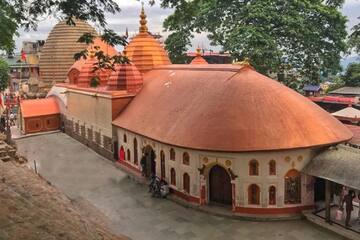A Brief Historical Profile of Assam Legislative Assembly
The Assam Legislative Assembly came into being on the day of its first sitting on April 7, 1937 in the Assembly Chamber at Shillong, the erstwhile Capital of the composite State of Assam.
Situated in the North East of the Country, Assam has had a glorious history of her own. Popularly known as the ethnological museum of India, Assam has been described as Mini-India, having a rich cultural heritage with diverse race, religion and culture. Assam under the provisions of India Council Act, 1861 did not have its own democratic institution but was tagged with East Bengal in 1905 and the Institution was then called "Legislative Council of Eastern Bengal and Assam", which started functioning from December 18, 1906. In 1909, the Council had a strength of 40 members and out of 40 seats, Assam was allotted 5 seats. In 1912 Assam was reconstituted into a Chief Commissioners' province. In the year 1913, after Assam was granted a Legislative Council under the Government of India Act. 1909, the Assam Legislative Council came into being with a strength of 34 members of which 13 were nominated by the Chief Commissioner and 21 were elected by the people. The Legislative Council of Assam first met on 6th January, 1913 at 11 a.m. at Shillong, which was presided over by Sir Archdale Easle, the Chief Commissioner of Assam. Under the Government of India Act. 1919, the strength of the Legislative Council was raised to 53 members with effect from Ist April, 1921 of which 41 were elected members and the remaining 12 were nominated.
The Government of India Act, 1935 was adopted by the British Parliament on 2nd August, 1935 and was implemented in 1937. The Government of India Act 1935 made provisions for a Legislative Assembly in each province and as a result the Legislature in Assam became bicameral. The Assam Legislative Assembly had the strength of 108 members and all of them were elected members. the strength of the Legislative Council (Upper House) was not less than 21 and not more than 22 members.
After the partition of India, Sylhet district of Assam was transferred to the then East Pakistan by a referendum and the strength of the Assembly was reduced to 71. However, after Independence, the strength of members were again raised to 108. The bicameral Assam Legislative Assembly became unicameral with the abolition of the Assam Legislative Council in 1947. In the years that followed, Assam was truncated to several smaller states. In 1963, Nagaland came into being as a separate State. With the passing of North Eastern (Reorganization Areas) Act in 1971 by the Parliament, Meghalaya became a full-fledged state. Subsequently, Mizoram and Arunachal Pradesh also followed suit. After the creation of Meghalaya as a separate state, Shillong continued to be the joint capital of both Assam and Meghalaya. However, in 1972, the Government of Assam decided to shift the Capital to Dispur, Guwahati. Accordingly, the first sitting of the Budget Session of the Assam Legislative Assembly was held at the temporary capital at Dispur on the 16th March, 1973.
With the changing geographical boundaries together with the shifts in the population graph of Assam, the strength of members of the Assam Legislative Assembly has fluctuated during the last fifty odd years. In 1952-57 it was 108, reaching still lower to 105 in 1957-62 (the Second Assembly) and then to 114 in 1967-72 (the third Assembly) until it reached a strength of 126 members in 1972-78 (the fifth Assembly) and it has continued to maintain that figure till the 11th Assembly.
Although the Article 172 provides the duration of State Legislative Assembly as 5 years due to the imposition of National Emergency in 1975 the fifth Assam Assembly lasted for 6 years.
Late Babu Basanta Kumar Das was the first Speaker of the Assam Legislative Assembly.
About Assam

Assam is situated in the North-East of India and is the largest northeastern state in terms of population while second in terms of area. Assam covers an area of 78,438 km2 (30,285 sq miles). The state is bordered by Bhutan and the state of Arunachal Pradesh to the north; Nagaland, Arunachal Pradesh and Manipur to the east; Meghalaya, Tripura, Mizoram, and Bangladesh to the south; and West Bengal to the west. A significant geographical aspect of Assam is that it contains three of six physiographic divisions of India – The Northern Himalayas (Eastern Hills), The Northern Plains (Brahmaputra plain), and Deccan Plateau (Karbi Anglong).
Page Statistics
- Total Views: 135063
- Content Last viewed on: 21-Nov-2024
- Last updated on: 01-Dec-2020
